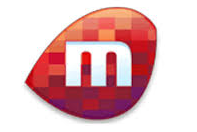 Miro Computer Products AG
Miro Computer Products AG
miro Computer Products AG was a German manufacturer of PC multimedia equipment. Their product line included sound cards, TV and radio adapters, and some graphics cards.
The company was acquired by Pinnacle Systems in 1997.
miro Computer Products Inc., the US arm of the business resided at
955 Commercial Street,
Palo Alto, CA 94303, USA.
Tel: (800) 249-MIRO,
Tel: (415) 855-0940,
Fax: (415) 855-9004,
Fax on demand: (415) 855-9494,
Hotline: (415) 855-0950,
Internet: support@miro.mirusa.com,
Web Site: www.miro.com
Sound Cards
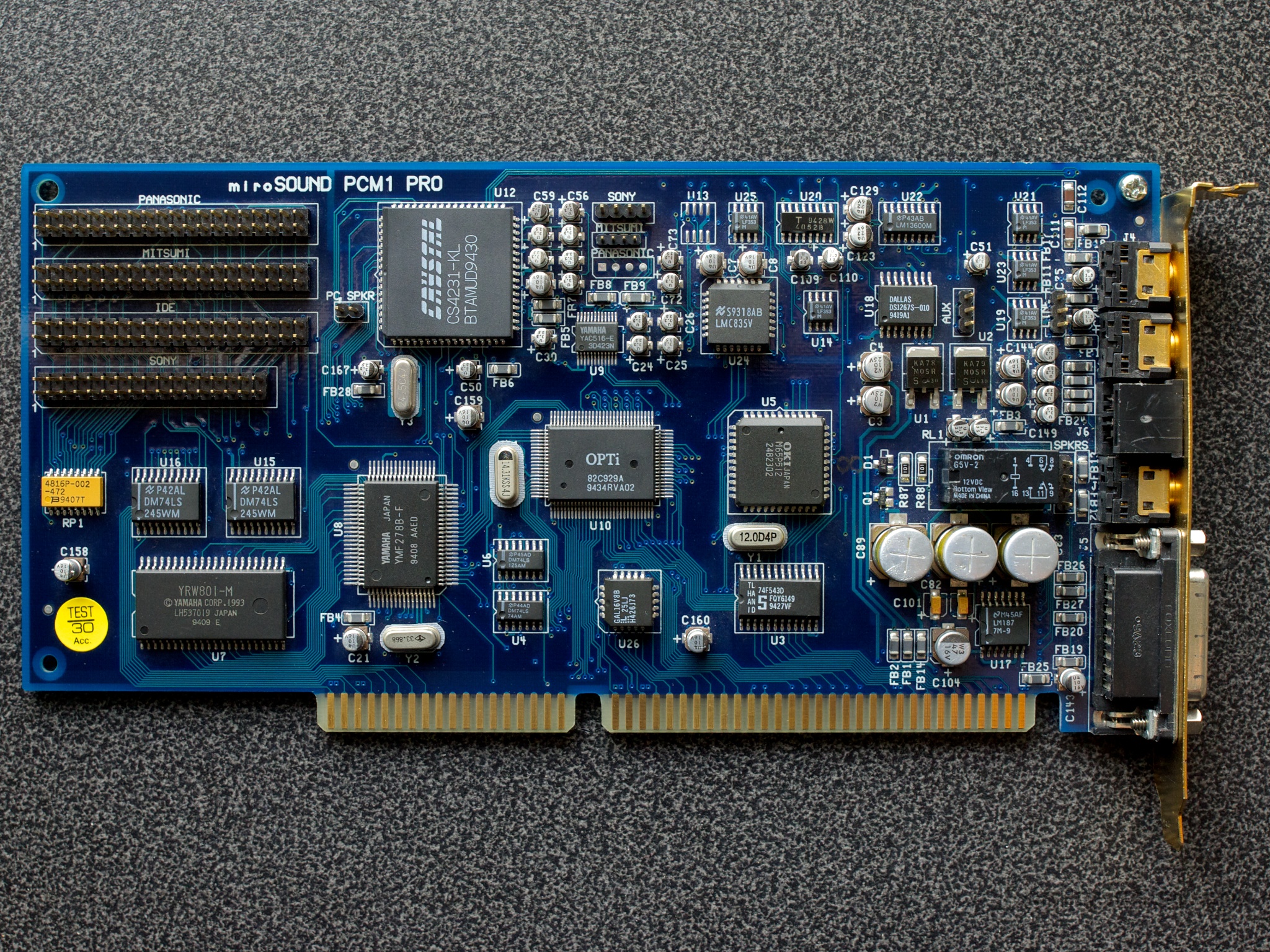 miroSOUND PCM 1 Pro miroSOUND PCM 1 Pro      
Introduced: 1994
FM synthesizer: Yamaha YMF278B-F (OPL4)
Audio codec: Crystal CS4231-KL
Chipset: OPTi 82C929A (MAD16 Pro)
DAC: Yamaha YAC516-E
IDE, Sony, Panasonic and Mitsumi CD-ROM headers
Featuring the then-new OPL4 chip from Yamaha, the PCM 1 Pro provided good General MIDI sound quality through this onboard wavetable (although it only works in Windows, not DOS), in addition to full backward compatibility with older sound card standards Ad Lib, Sound Blaster Pro 2 version 3.01, and Windows Sound System. The card's 16-bit sampling capability complies with MPC1 and MPC2 multimedia specifications.
The Yamaha YRW801 chip in the bottom left is a 2 MB ROM which holds approximately 330 samples, mostly 22.05-kHz 12-bit samples with some drums at 44.1 kHz. It is compatible with the General MIDI standard (128 melody sounds, 47 percussion sounds).
As mentioned, the OPL4 chip here does *not* work in DOS, as it doesn't use the MPU-401 address/IRQ. Only the game/MIDI port is MPU-401-compatible.
User Manual
More Images
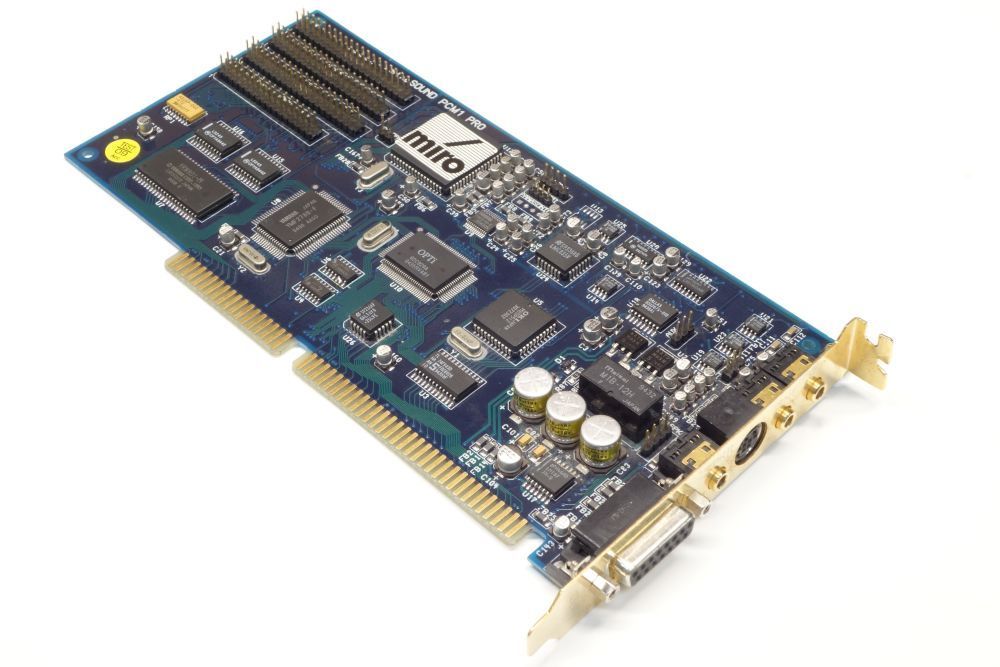
|
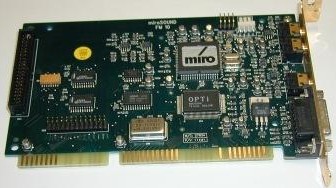 miroSOUND FM 10 miroSOUND FM 10     
Introduced: 1995
Chipset: OPTi 82C929A (MAD16 Pro)
Compatibility: Ad Lib, Sound Blaster, Sound Blaster Pro 2.0, Windows Sound System, and Roland MPU-401 (Windows only).
IDE, Sony, Panasonic and Mitsumi CD-ROM headers.
Windows 95/98, Windows NT 4.0, User Manual (German) |
.jpg) miroSOUND PCM 10 miroSOUND PCM 10      
Introduced: 1995
FM synthesizer: Yamaha YMF278B-F (OPL4)
Chipset: OPTi 82C929A (MAD16 Pro)
Built-in wavetable synthesizer based on Yamaha OPL4 chip and 2MB ROM sample set.
Roland MPU-401 UART compatible (Windows only).
IDE, Sony, Panasonic and Mitsumi CD-ROM headers.
The Yamaha YRW801 chip in the bottom left is a 2MB ROM which holds approximately 330 samples, mostly 22.05-kHz 12-bit samples with some drums at 44.1 kHz. It is compatible with the General MIDI standard (128 melody sounds, 47 percussion sounds).
Windows 95/98, Windows NT 4.0, User Manual
More Images
.jpg) .jpg) 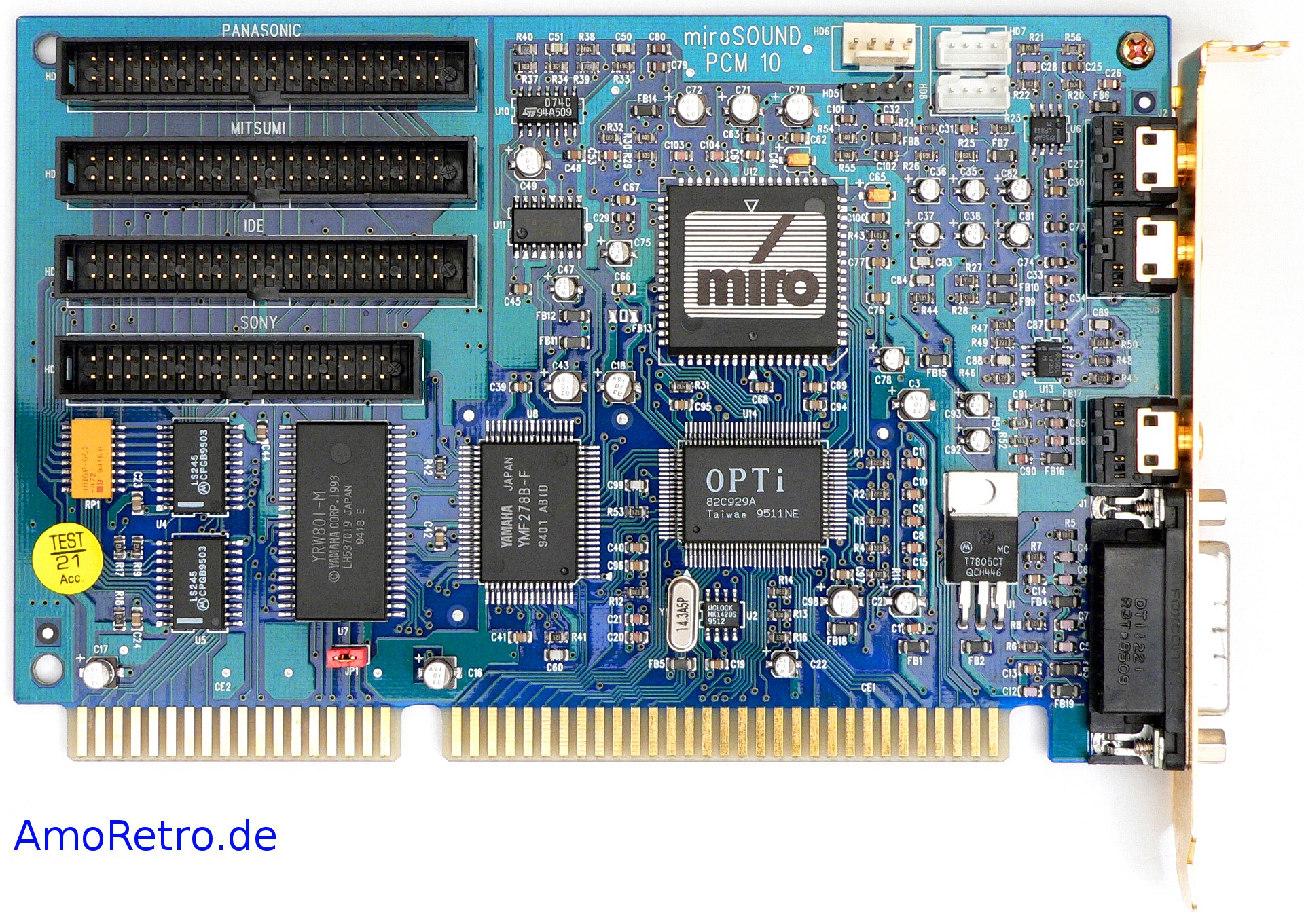 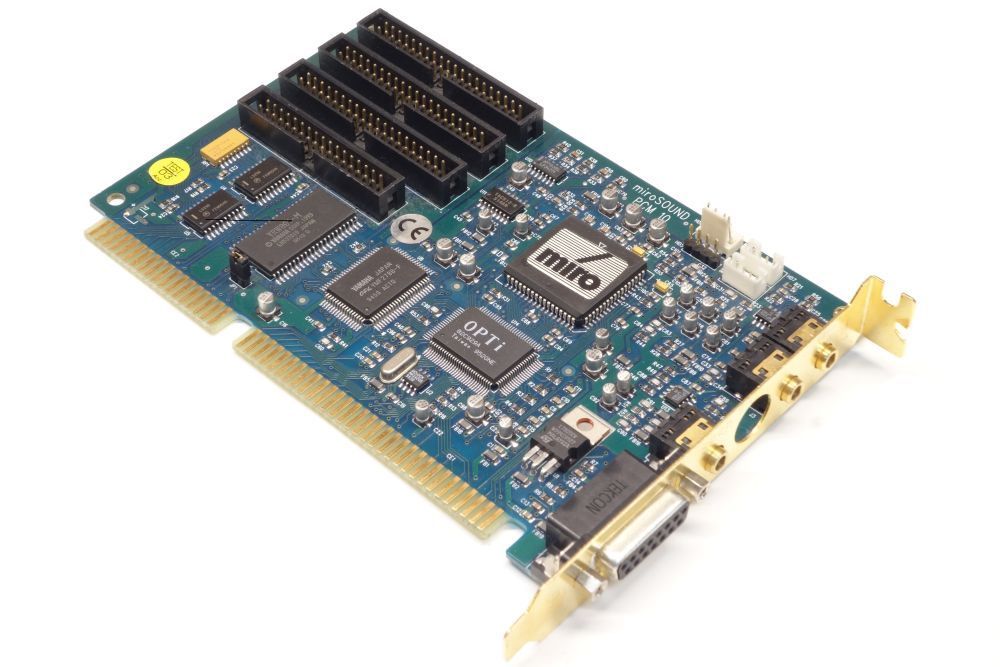
Top picture and first two above are courtesy of DOS Day's contributor, targeted.
|
 miroSOUND PCM 12 miroSOUND PCM 12      
Introduced: 1995
Chipset: OPTi 82C924. Earlier revisions had a 82C929A (MAD16 Pro)
Audio codec: Analog Devices AD1848 (Earlier revisions had a Crystal CS4231A)
Compatibility: AdLib, Sound Blaster, Sound Blaster Pro II, Microsoft Windows Sound System 2.0, Roland MPU-401 (Windows and DOS)
1995 version is non-PnP. A later PnP version was released in 1996
FCC ID: LAHSPCM12-ISA-1
Built-in wavetable synthesizer based on Yamaha OPL4 chip and 2MB ROM sound set.
Wavetable daughterboard connector connects to the MPU-401 UART port on the OPTi chip.
Revision E of this card also gets an IDE connector for CD-ROM drives. Older revisions got 3 older CD-ROM connectors for Mitsumi, Panasonic and Sony.
Initialisation and mixer settings must be made by running SNDINDOS.EXE.
The Yamaha YRW801 chip in the bottom left is a 2MB ROM which holds approximately 330 samples, mostly 22.05-kHz 12-bit samples with some drums at 44.1 kHz. It is compatible with the General MIDI standard (128 melody sounds, 47 percussion sounds).
Windows 95/98, Windows NT 4.0, User Manual |
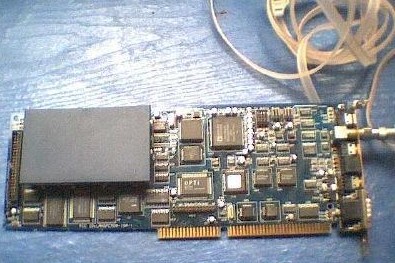 MiroSOUND PCM 20 MiroSOUND PCM 20      
Introduced: 1996
Chipset: OPTi 82C924
PnP.
Compatibility: AdLib, Sound Blaster, Sound Blaster Pro II, Microsoft Windows Sound System, Roland MPU-401 (Windows and DOS).
Built-in wavetable synthesizer based on Yamaha OPL4 chip and 2MB ROM sound set.
Similar to PCM 12, but includes a built-in radio tuner.
The OPTi chipset manages direct MIDI playback over the MPU-401 interface. Yamaha’s own SW20-PC provided a software driver for DOS enabling MPU-401 playback.
Windows 95/98, Windows NT 4.0, User Manual
|
Graphics Cards
.jpg) HiScore 3D HiScore 3D
Launched: 1996
Bus: PCI
Chipset: 3dfx Voodoo
Memory: 6 MB
Memory Speed: 35ns
RAMDAC: 135 MHz
Price: $180(?)
The miro HiScore 3D came with the larger complement of 6 MB of video memory for 3Dfx Voodoo cards. This was split into 2 MB for a frame buffer and 4 MB for textures. Over the 4 MB Voodoo cards, this allowed smoother 3D graphics rendering as less requests from memory were required in-game.
Being a dedicated 3D accelerator card with no 2D capability, it connected via a VGA passthrough cable to a 2D card in your computer, where another VGA cable would be connected to your monitor. The card auto-detected when 3D was being requested and commands would be sent to the HiScore 3D instead of being processed by the 2D card.
It was followed in 1998 with the HiScore 3D 2, which was a 3Dfx Voodoo 2 card with 12 MB of video memory.
The latest Windows 95/98 driver is v2.7, dated February 1999 - download here
For Windows NT 4.0, it's v2.14, dated December 1998 - download here
For Windows 2000/XP, it's 09/00 - download here
If you have any issues with the miro driver, try using the 3Dfx Voodoo reference driver instead.
User Manual (German)
More Images
.jpg) .jpg) 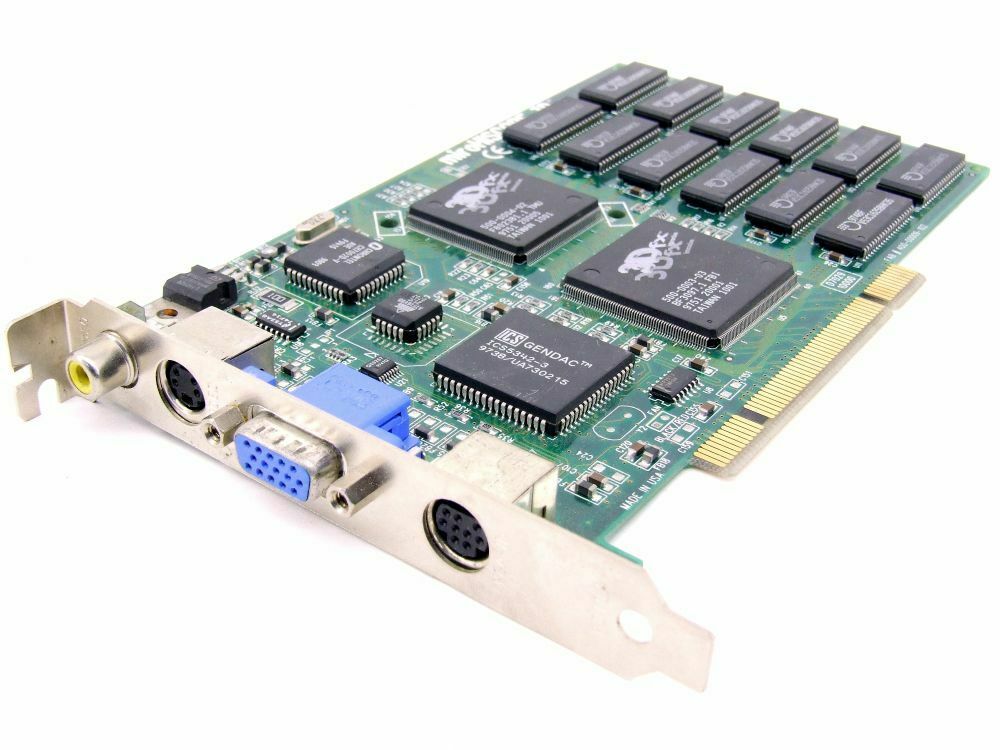
|
 Miro Computer Products AG
Miro Computer Products AG


.jpg)
.jpg)
.jpg)




.jpg)
.jpg)
.jpg)
